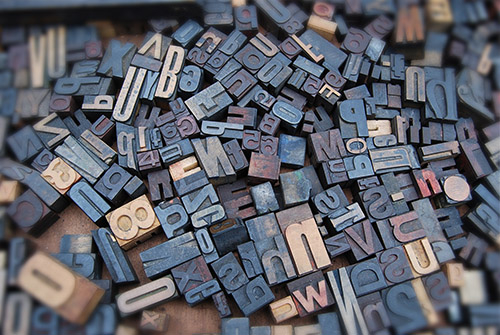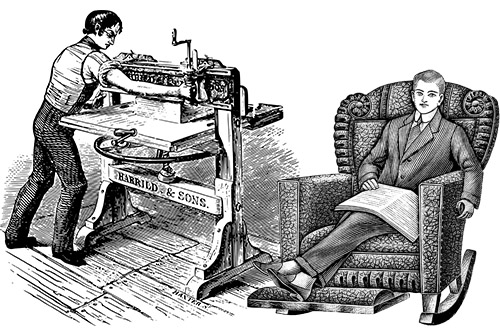
Down and Dirty with Dante Rossetti
Dante Gabriel Rossetti! Lead letters caste backwards and upside down! Ink! Poetry! Frustration! Joy!
I’m writing, of course, about “Illustrated Victorian Poetry” – a class I’m currently taking as one of my Graduate Seminar in Literature requirements. Creative Nonfiction students need to take two of these seminars to fulfill the criteria for graduation and one of these must be History of the Essay.
While History of the Essay is offered annually, other seminars have more irregular schedules. I know students who have fulfilled this requirement by taking courses in Post-Colonial literature and African American Literary Criticism. I am very fortunate in my time here at Columbia College Chicago to have had Illustrated Victorian Poetry as a choice because, as an artist, combining text with image has always been at the forefront of my output.
The seminar is taught by Dr. Ken Daley, who is also the current Chair of the English and Creative Writing Program. Dr. Daley is a renowned expert on Victorian writers and he’s currently working on the definitive annotated edition of the collected works of Walter Pater, the essayist and critic. Ken is fanatically passionate about this stuff, and it’s contagious.

Reading backwards is a helpful skill in the world of typesetting.
We have the requisite analysis of the dense poetry of Tennyson and the Rossetti siblings, which has been a challenge for me given my background isn’t in poetry. We also write interpretations of the images – engraved woodblock illustrations – that accompanied collections of these poems, and our final project is a conference paper that relates in some way to the combination of image and text in the 19th Century (my paper is about Mexican broadsides from 1870-1910).
All of this has truly deepened my knowledge about poetry and its terminology. The class has also honed my research abilities and made me think more critically about the subject. The conference paper is a satisfying – if daunting – task because it prepares me for rigorous investigation should I choose to further my academic career beyond my MFA.
All that said, my favorite part of the class is when we get down and dirty. Three of the classes are devoted to the preparation and printing of our own work and illustrations under similar conditions as the Victorians would have worked. Class meets on these days on the second floor of the 1104 South Wabash building, in the printmaking studio. As someone who took many fine art classes as an undergraduate, it is invigorating to be back in a studio and, though the work is hard, it is incredibly satisfying.

The author painstakingly printing his broadside so some guy in a chair can later enjoy it.
My classmates and I typeset our own poems. It’s a tedious and stressful process wherein each individual backwards letter must be set in a galley. We all started out with twelve lines of poetry but, after getting into the process and realizing the difficulties, many of us cut our poems down significantly. We were each provided with small linoleum blocks into which we carved (backwards) our illustrations. The illustrations will be locked into the galley with the type, rolled with ink, and then placed beneath a sheet of paper onto one of the hundred-year-old printing presses.
We won’t be printing until next week, but with a little luck and lots of help from students in the Book and Paper Arts division we will each have an edition of twelve broadsides for all our hard work. Illustrated Victorian Poetry has been one of the most fun and challenging classes I’ve taken during my time at Columbia. I hope you get a chance to take it too!
